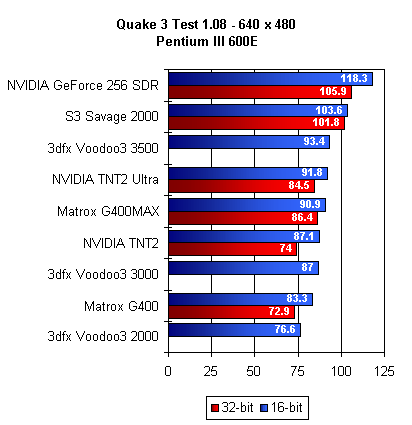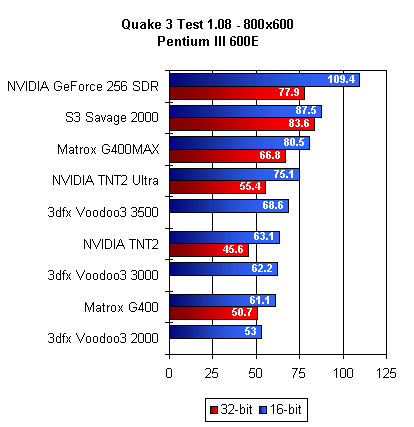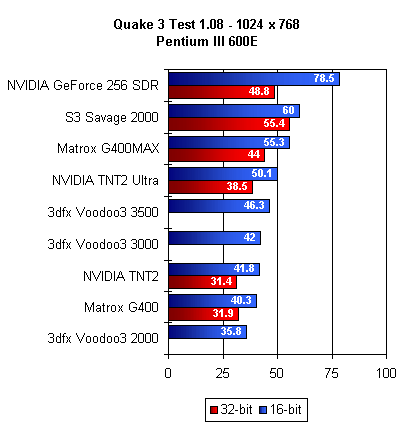S3 Savage 2000 (Diamond Viper II)
by Anand Lal Shimpi on November 18, 1999 10:46 PM EST- Posted in
- GPUs

Resetting the resolution to 640 x 480, this time on the "slower" Pentium III 600E on a AGP 2X BX platform results in a similar conclusion to our previous one: with better drivers the Savage 2000 should be able to surpass the GeForce 256 in performance. Whether or not that will happen is another question, but the performance here is respectable in that the Savage 2000 is faster than the rest of the cards but it is disappointing because the chip still falls behind the GeForce in performance.

Once the resolution increases, the Savage 2000 drops to well below the performance of the GeForce 256 in 16-bit color. The Savage 2000 pulls ahead once again in 32-bit color because of the greater available memory bandwidth, courtesy of its use of only a 16-bit Z-buffer in the test versus the GeForce's 32-bit Z.

At 1024 x 768, the Savage 2000 brings forth the same scores with a Pentium III 600E that it did with the 733. What does this mean? When an increase in CPU speed results in no increase in gaming performance the usual cause is that the graphics card is already hitting its peak performance. In this case we'll hope that the Savage 2000 isn't already hitting its performance limits and this will be corrected by updated drivers. But at the same time, remember that the Savage 3D and Savage 4 both exhibited a very similar trend in their performance where they maxed out long before they theoretically should have.










0 Comments
View All Comments